By Sean Comerford Silicone sealant is an essential tool for plumbers and contractors alike. Known for its flexibility, durability, and water resistance, it proves invaluable across a broad spectrum of plumbing applications, effectively sealing everything from air to water. This article delves into advanced techniques and best practices for using silicone sealant and offers unconventional Read more
Oatey Co.
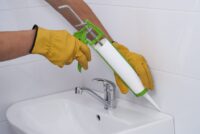
By Sean Comerford
Silicone sealant is an essential tool for plumbers and contractors alike. Known for its flexibility, durability, and water resistance, it proves invaluable across a broad spectrum of plumbing applications, effectively sealing everything from air to water. This article delves into advanced techniques and best practices for using silicone sealant and offers unconventional uses for plumbing situations.
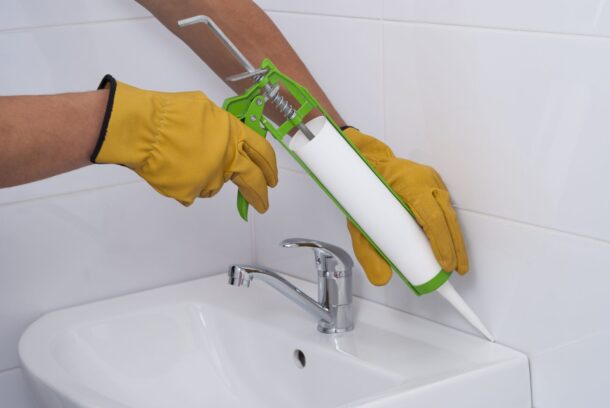
Advanced Techniques for Using Silicone Sealant
Proper Application Methods: The effectiveness of silicone sealant largely depends on how well it is applied. Ensure the application area is clean, dry, and debris-free. Use a caulking gun to apply a continuous bead of sealant, maintaining steady pressure to avoid air bubbles. Smooth the bead with a caulking tool or your finger dipped in soapy water to achieve a clean finish.
Accurate Sealing in Difficult Areas: Sealing tight or awkward spaces can be tricky. Utilize specialized tools like angled nozzles and flexible extension tubes to reach narrow gaps and corners. When dealing with vertical surfaces, apply the sealant from the bottom up to prevent sagging.
Enhanced Bonding to Various Materials: Silicone sealant is highly effective in bonding various materials, including glass, metal, and plastic. For optimal adhesion, choose a sealant compatible with the specific materials you are working with. Apply a primer if recommended by the manufacturer to enhance bonding strength, especially on non-porous surfaces.
Leveraging Tools for Maximum Performance: Leverage tools such as caulking guns with adjustable pressure settings, smoothing spatulas, and silicone finishing kits to refine your application. These tools improve the quality of your work and increase efficiency, allowing for faster completion times.
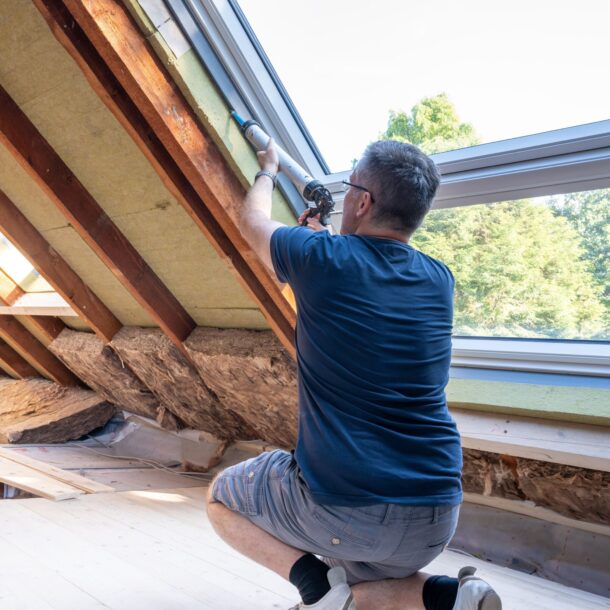
Best Practices for Silicone Sealant Application
Surface Preparation: Proper surface preparation is crucial for a successful seal. Clean the area thoroughly with a degreaser or alcohol-based cleaner to remove any oils or residues. Use a wire brush or sandpaper to roughen smooth surfaces, ensuring better grip for the sealant.
Choosing the Right Type of Silicone Sealant: Different plumbing tasks require different types of silicone sealant. For example, opt for high-temperature silicone for areas exposed to heat, while mildew-resistant sealant is ideal for bathroom and kitchen applications. Read product labels carefully to select the appropriate sealant for your specific needs.
Handling and Curing Considerations: Proper handling and curing are vital for the longevity of the seal. Store sealant tubes in a cool, dry place and ensure they are within their expiration date. After application, allow sufficient curing time as specified by the manufacturer, typically 24 to 48 hours. Avoid exposing the sealant to water or extreme temperatures during this period.
Maintenance and Longevity Strategies: To extend the life of your silicone seals, conduct regular inspections and touch-ups as needed. Remove and reapply sealant if you notice any signs of degradation, such as cracking or peeling. Use UV-resistant silicone for outdoor applications to prevent damage from sun exposure.
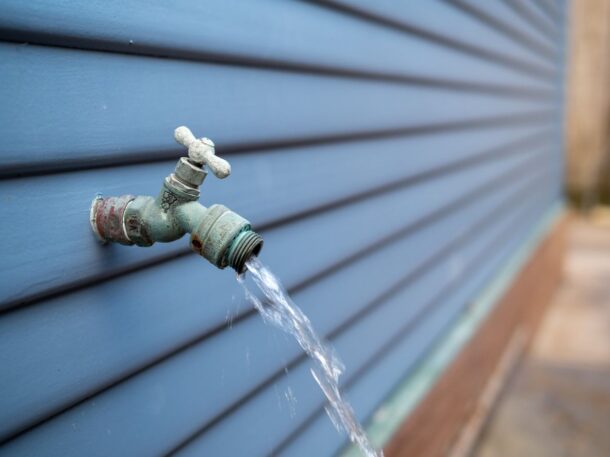
Unique or Less-Known Applications of Silicone Sealant in Plumbing
Downspouts: Silicone sealant can effectively seal seams and joints on downspouts in residential and commercial buildings. It can be especially beneficial in regions with heavy rainfall or snowfall, where water can easily penetrate cracks and weaken the downspout’s structure. It can also help reinforce the connections between different sections of the downspout, ensuring a secure fit that can withstand harsh weather conditions.
Hose Bib: When installing or repairing a hose bib, consider using silicone sealant around the base where it meets the wall to reinforce the bond. This watertight seal can prevent leaks and potential water damage while ensuring a secure connection capable of withstanding external stressors. Silicone’s elasticity allows it to expand and contract without losing its seal, making it perfect for outdoor applications.
Sewage Ejectors or Sump Pumps: When dealing with sewage ejectors or sump pumps where pipes protrude through a basement wall or foundation, consider applying a silicone sealant to create a watertight seal and prevent any potential leaks or seepage. This serves to protect the surrounding area from water damage and corrosion while also ensuring the efficient operation of the pump.
Roof Penetrations: Silicone sealant can serve as a viable temporary solution for addressing roof penetrations when immediate repair of the roof flashing is not feasible. By applying silicone sealant around the area of the roof penetration, a temporary barrier is created to prevent water leaks and potential damage until a permanent fix can be implemented by a professional roofer. This quick and easily accessible option can provide temporary relief and protection until the repair can be completed.
Silicone sealant is an indispensable product in the plumbing industry, offering versatility and reliability for many applications. Its superior water resistance, flexibility, and ease of use make it a preferred choice among plumbing professionals. By following these techniques and best practices and exploring unique applications, plumbers and contractors can maximize silicone sealant’s benefits.
 Sean Comerford is a Technical Applications Manager at Oatey Co. He is a third-generation tradesman with nearly 20 years of plumbing experience, including serving as the lead plumber for commercial/residential new-construction, service and fire protection jobs. He holds a State of Ohio Fire Protection License for Sprinkler and Standpipe.
Sean Comerford is a Technical Applications Manager at Oatey Co. He is a third-generation tradesman with nearly 20 years of plumbing experience, including serving as the lead plumber for commercial/residential new-construction, service and fire protection jobs. He holds a State of Ohio Fire Protection License for Sprinkler and Standpipe.

Twenty-year Oatey veteran with experience in supply chain and wholesale sales management now heads the wholesale rough plumbing, commercial, specialty, and showroom sales teams Oatey Co., a leading manufacturer in the plumbing industry since 1916, announced today that Matt Foraker has been promoted to Senior Vice President, Wholesale. Foraker joined Oatey more than 20 years Read more
Twenty-year Oatey veteran with experience in supply chain and wholesale sales management now heads the wholesale rough plumbing, commercial, specialty, and showroom sales teams
Oatey Co., a leading manufacturer in the plumbing industry since 1916, announced today that Matt Foraker has been promoted to Senior Vice President, Wholesale.
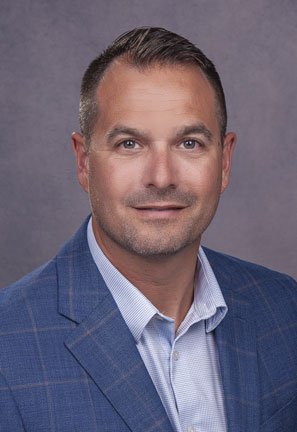
Foraker joined Oatey more than 20 years ago as a member of the supply chain team, before transitioning to the wholesale sales team in 2011 as National Sales Manager, Specialty Divisions. Since then, he has served as Regional Sales Manager in the Southeast and National Sales Manager for Rough Plumbing. Since October, he has led Oatey’s wholesale team on an interim basis as Director of Wholesale.
As SVP, Wholesale, Foraker will lead Oatey’s wholesale rough plumbing, commercial, specialty and showroom sales teams, focused on investing in customer relationships while growing sales and evolving business strategy.
“My career at Oatey has been incredibly rewarding, and I’m pleased to be a part of the company’s ongoing growth,” says Foraker. “I’m excited to continue to partner with our exceptional sales team, rep agencies and customers to achieve great things together.”
“During his time at Oatey, Matt has established himself as a highly respected, strategic leader both in our business and across our industry,” said Wyatt Kilmartin, Oatey’s Executive Vice President and Chief Commercial Officer. “I look forward to his expanded leadership as we continue to deliver results for our customers and our organization.”
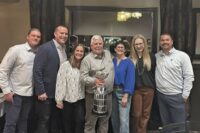
The award is given to a manufacturer’s representative who exemplifies the legacy and winning spirit of the late Bob Bender, a trailblazing member of the Oatey sales organization for more than 40 years. Oatey Co., a leading manufacturer in the plumbing industry since 1916, proudly announces Rick Portt, owner of New Century Sales, as the Read more
The award is given to a manufacturer’s representative who exemplifies the legacy and winning spirit of the late Bob Bender, a trailblazing member of the Oatey sales organization for more than 40 years.
Oatey Co., a leading manufacturer in the plumbing industry since 1916, proudly announces Rick Portt, owner of New Century Sales, as the third annual winner of the Bob Bender Legacy Award. This recognition highlights Portt’s exceptional dedication to his customers, unwavering commitment to the Oatey brand, and outstanding contributions to the plumbing industry.
The award is named in honor of the late Bob Bender, a 42-year veteran sales leader at Oatey, known for his larger-than-life personality, customer-centric approach, and passion for building enduring relationships. The award celebrates individuals who embody Bender’s spirit by prioritizing customer satisfaction, fostering strong connections, and demonstrating a genuine commitment to the values upheld by Oatey Co.
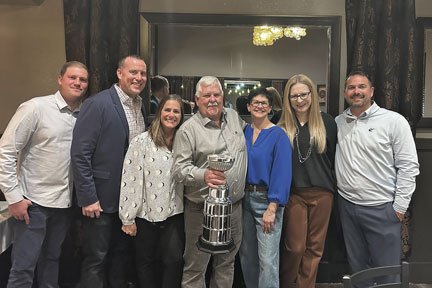
“Rick Portt exemplifies the essence of the Bob Bender Legacy Award. His unwavering dedication to his customers, combined with his commitment to the Oatey brand, makes him a truly deserving recipient,” says Christen Allen, Director of National Sales – Rough Plumbing at Oatey Co. “Rick’s genuine passion for his work and his relentless pursuit of excellence serve as a shining example for the entire industry.”
Founded in 1997, New Century Sales has been a cornerstone in the plumbing industry for over three decades. Under Portt’s leadership, the company has continuously upheld the highest standards of professionalism, integrity, and customer service. Portt’s enduring commitment to Oatey Co. is reflected in his steadfast advocacy for the brand, his relentless pursuit of customer satisfaction, and his unwavering support of the plumbing community.
Portt’s dedication to his craft is underscored by his adherence to three guiding principles: build relationships, secure orders, and the motto “have fun; it’s just plumbing.” These principles have been instrumental in shaping his approach to business and have earned him the respect and admiration of his peers and customers alike.
In recognition of his outstanding contributions, Portt was presented with the Bob Bender Legacy Award at a ceremony held in Detroit, Michigan. Surrounded by colleagues, customers, and members of the Oatey team, Portt graciously accepted the award, thanking those who have supported him throughout his career.
“I consider myself fortunate to have worked alongside Bob for many years,” says Portt. “The first time I had the opportunity to interact with him was during a competition he had organized called ‘Create A Vacation.’ At that time, I was new to Reliant Sales and halfway through the contest, Bob took the time to reach out to me because we had never met.”
“His thoughtfulness and support motivated me to work even harder, and I ended up winning the contest,” he explains. “Bob’s commitment to Oatey and everyone he worked with was truly inspiring. Whenever Bob’s name is mentioned, it is always accompanied by a smile and a fond memory. It is indeed an honor for me to have my name associated with Bob’s legacy.”
Portt’s name was added to the Bob Bender Legacy Cup, which commemorates the list of winners, alongside Chase Freeman of Spirit Group, who won the inaugural award in 2022, and Skipper Joyce, founder of The Joyce Agency and winner of the second annual award in 2023.
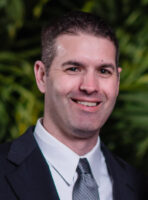
Oatey Co., a leading manufacturer in the plumbing industry since 1916, has hired Jon Boehlke as Director of Operations at its William H. Harvey manufacturing facility in Omaha, Nebraska. Boehlke comes to Oatey from Hormel Foods, where he worked for more than two decades in various manufacturing leadership positions, most recently serving as Senior Operations Read more
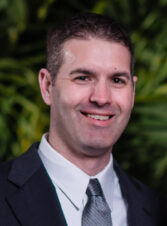 Oatey Co., a leading manufacturer in the plumbing industry since 1916, has hired Jon Boehlke as Director of Operations at its William H. Harvey manufacturing facility in Omaha, Nebraska.
Oatey Co., a leading manufacturer in the plumbing industry since 1916, has hired Jon Boehlke as Director of Operations at its William H. Harvey manufacturing facility in Omaha, Nebraska.
Boehlke comes to Oatey from Hormel Foods, where he worked for more than two decades in various manufacturing leadership positions, most recently serving as Senior Operations Manager. In his new position at Oatey, he will oversee the day-to-day operational and long-term strategic needs of the Omaha manufacturing facility, ensuring that operational functions are performed in a timely, efficient, and safe manner.
“Jon is a proven operations leader with robust experience leading teams and driving results in a manufacturing environment,” said Bob Beesley, Oatey’s Senior Vice President, Manufacturing and Engineering. “We are pleased to welcome him to the Oatey team and look forward to his many contributions at our Omaha site.”
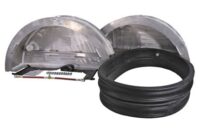
Cherne’s Disc Seals are made with lightweight aluminum and include field-replaceable double bladders for a leakproof seal Cherne Industries, part of the Oatey Co. family of companies, recently launched a line of Disc Seal plugs, designed to block flow or provide bypass flow in underground pipes with low backpressure. Used for pipe construction, rehabilitation, cleaning Read more
Cherne’s Disc Seals are made with lightweight aluminum and include field-replaceable double bladders for a leakproof seal
Cherne Industries, part of the Oatey Co. family of companies, recently launched a line of Disc Seal plugs, designed to block flow or provide bypass flow in underground pipes with low backpressure. Used for pipe construction, rehabilitation, cleaning and testing, the plugs can be separated into two halves to fit through any manhole effortlessly.
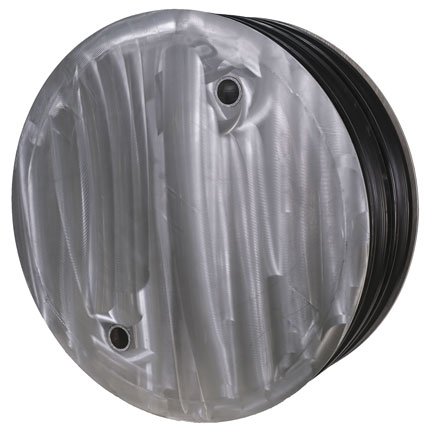
Cherne’s Disc Seals are built with two field-replaceable double bladders to ensure a leakproof seal up to five pounds per square inch (PSI) of backpressure. The plugs’ thoughtful design makes them easy to work with. For example, in addition to being built with lightweight, corrosion-resistant aluminum, the plugs come with handles for easy installation and transport. Plus, no matter the manhole size, contractors can be confident the plug will fit by simply separating the plug into two halves.
Cherne Disc Seal plugs are available sizes ranging from 24 inches through 96 inches. For more information, visit cherneind.com.
